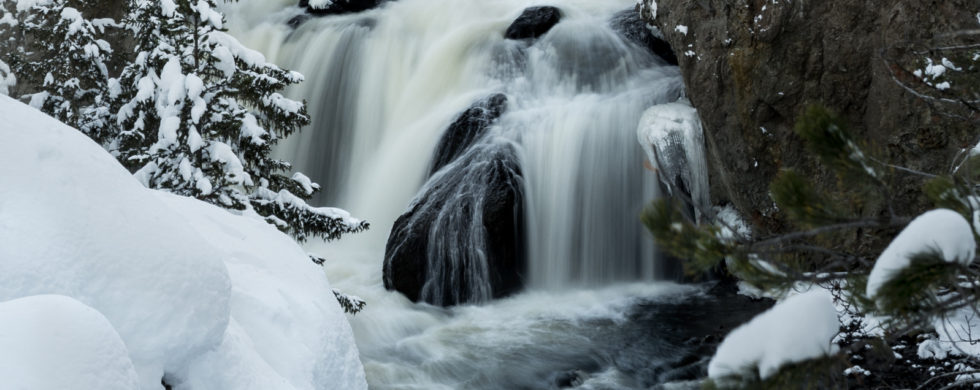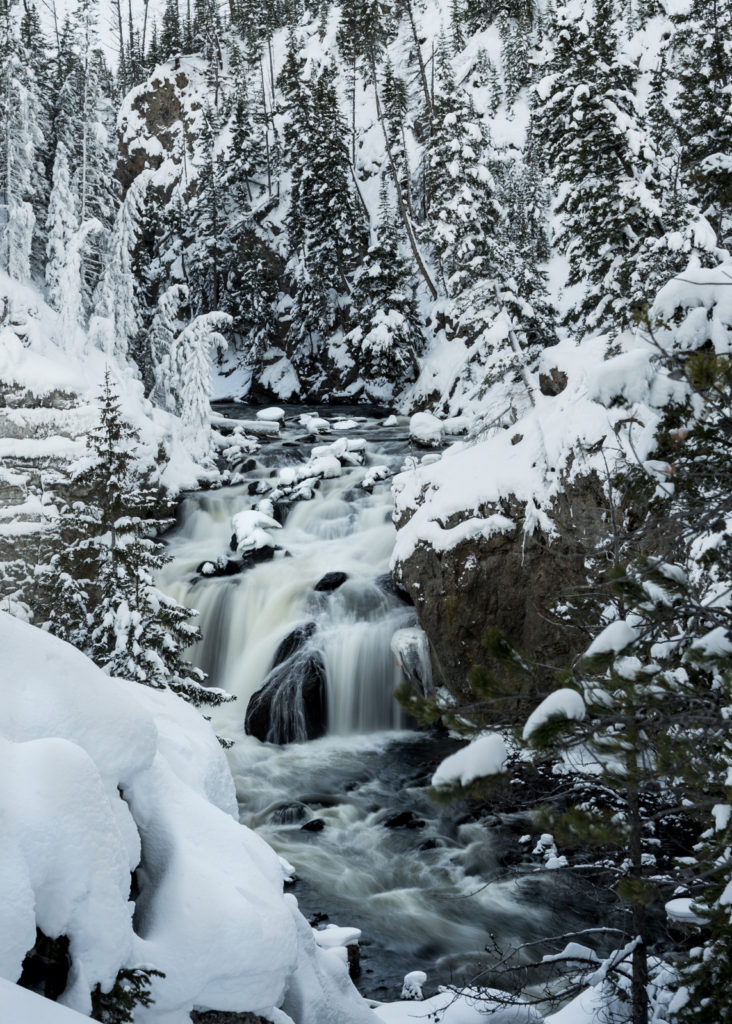
31
2018Falling for Nature
Shot of the Month – January 2018
Regardless of the country, people seem drawn to explore, visit, and photograph the natural beauty of waterfalls. How big a draw are waterfalls? Well, over 12 million people travel to see Niagara falls each year along the US-Canada border! That’s just one waterfall out of thousands across the planet.
The dramatic settings and wild beauty of waterfalls are the visual equivalent of catnip for photographers and they hit the trails in droves to take images of falls, big and small, throughout the year. Capturing a compelling image of a waterfall can be a fairly technical, tricky affair — one can’t really just walk up to the water’s edge and snap a picture and expect to get something special.
A few tips for those of you inclined to try your hand at shooting the shoots:
Primary Task: Achieve A Slow Shutter Speed (Confused by shutter speed? Check out this great article)
When we look at a waterfall our eyes transform the falling water into a lovely silky cascade. In order to create this effect in a camera we need to use a slow shutter speed. This means that we want to keep the shutter open for a “long” time. This means, probably a shutter speed of 1/4th of a second. Or 1/3rd of second. 1/2 a second. Perhaps one whole second. You may even want to keep the shutter open for several seconds to make a dramatic looking image. There is no “ideal” speed. You need to experiment with different shutter speeds and find the look that you like best.
High Shutter Speed = The shutter is opens for a short duration (e.g. 1/1000 of a second or less)
Slow Shutter Speed = The shutter is open for a long duration (e.g. 1/2 of a second or more)
The challenge is that during the day, if there is a lot of light available, your camera will not allow you to access those slow shutter speeds as the images will come out overexposed. How do we get there?
Use a Low ISO
Set your ISO to its lowest setting to help keep the shutter speed down.
Use a low Aperture Setting (Great article on understanding Aperture)
Stop your aperture down to f/11 or f/16 or smaller to reduce the amount of light that reaches your camera sensor — this will help create longer shutter speeds and will maximize the depth of field of your shot.
Avoid the Sun
The best time to photograph waterfalls is when it is cloudy – this will make it easier to achieve those long shutter speeds. And shoot at sunrise or sunset when there is less light in the sky. If the sun is out in full force, it might be best to go photograph something else.
Use a Tripod
With slow shutter speeds a tripod is essential to avoid motion blur. No hand holding your camera for a great waterfall shot.
Use Neutral Density Filters ( Learn more here)
Still too much light? Most professional photographers use Neutral Density Filters to reduce the amount of light that can enter into the lens. This allows for the lower shutters speeds that we need to photograph waterfalls and streams. A polarizing filter can also be used as this will reduce the light and will also help remove unwanted reflections from wet rocks, leaves, etc.
I know, all this techno-geekness is rather tedious, but using these techniques and equipment will now allow you to explore the full creative range of one of nature’s natural wonders. From here let your artistic juices flow. How can you create a compelling composition? What should be in the foreground? Any interesting scenery that can be included? How about an unusual viewpoint or angle? Try different lenses – wide angle, zoom lenses, etc. Shoot in portrait and then in landscape. Find a way to get something new or fresh – not the same old shot that every other traveler took of the scene. If you can, go back again and again and explore how the scene is transformed at different times of the day and during different seasons of the year.
Or, leave the camera at home and enjoy the hike and commune with nature. Whatever it takes to get you out there….enjoy.
Here a few good articles on photographing waterfalls:
The Secrets of Stunning Waterfall Photography
Nikon D4S, Nikon 28-105mm (@ 55mm), f/16, 3/5 sec, ISO 100

